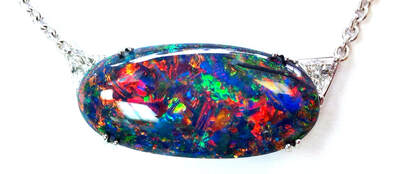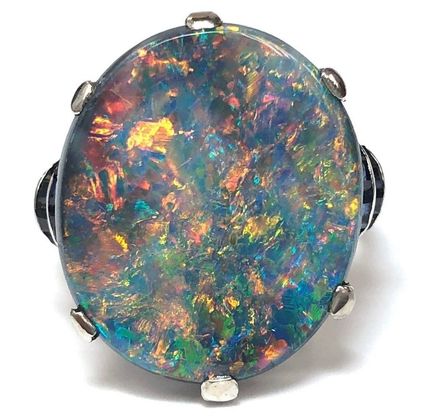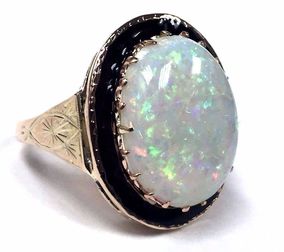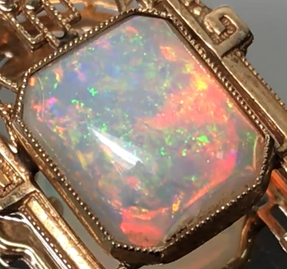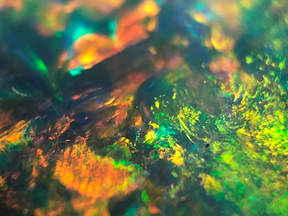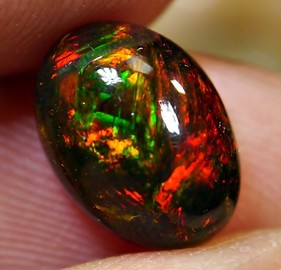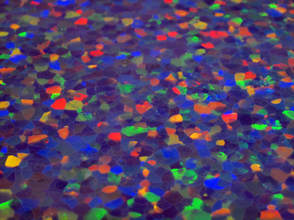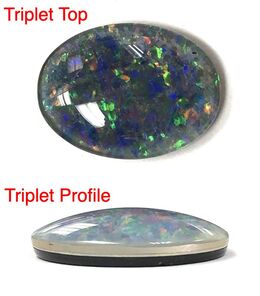OPAL
|
Species: Opal
Mohs Hardness: 5.5 to 6.5 out of 10 Color: Colorless, white, black, gray, bluish gray or brown. With or without play-of-color. Fire opals are orange or orangy red, with or without play-of-color. RI: 1.450 (+0.020 / -0.080) Birefringence: None SR/DR/AGG: SR, commonly with ADR due to strain Spectrum: Not diagnostic Fluorescence: Inert to white to moderate light blue, green, or yellow under LW and SW. Might phosphoresce. SG: 2.15 (+0.08 / -0.90) Routine Treatments: None Additional Enhancements: Dyeing, smoke treatment, sugar treatment |


